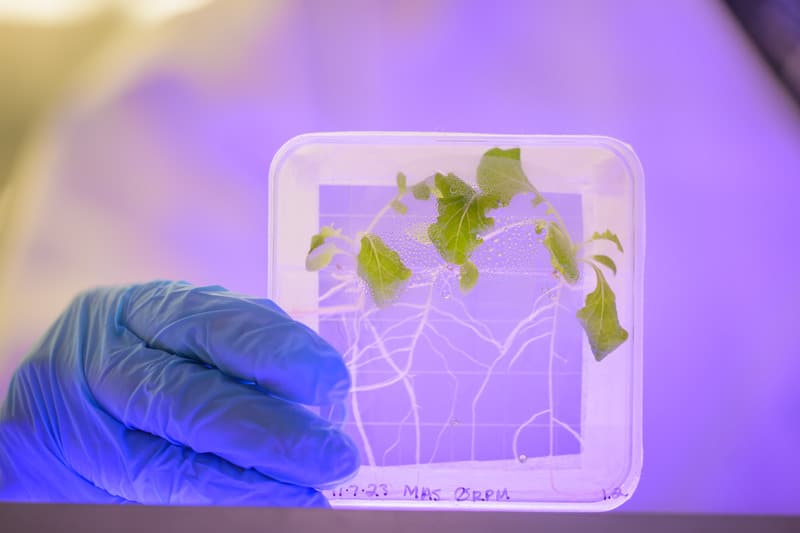
Lettuce and other leafy greens have been a part of astronauts’ diets on the International Space Station (ISS) for years. Grown in control chambers that manage temperature, water, and light, they’ve offered a fresh addition to the space menu. However, a new study hints these veggies might not be as healthy as their Earthly counterparts.
Lack of gravity confuses plant growth and makes them more susceptible to pathogens
The ISS harbors numerous pathogenic bacteria and fungi, posing a risk of contamination to plants like lettuce, which can lead to foodborne illnesses. This issue is significant, especially considering the vast investment in space exploration by NASA and companies like SpaceX.
To address this, University of Delaware (UD) researchers embarked on a study, published in Scientific Reports and npj Microgravity, to understand how lettuce reacts in space-like conditions. They simulated microgravity using a clinostat, which confuses plants’ gravity response, making them lose their sense of direction. Interestingly, they found that plants were more susceptible to Salmonella infections under these conditions.
In plants, stomata – tiny openings used for gas exchange – usually close as a defense against stressors like bacteria. However, lettuce did the opposite under simulated microgravity, opening its stomata wider. This unexpected reaction increased the plants’ vulnerability to pathogens. The researchers used the clinostat to replicate the spinning motion of a rotisserie chicken, effectively disrupting the plants’ normal response to gravity.
“The fact that they were remaining open when we were presenting them with what would appear to be a stress was really unexpected,” lead author Noah Totsline said. “In effect, the plant would not know which way was up or down. We were kind of confusing their response to gravity.”
Another aspect of their research involved a helper bacteria, B. subtilis UD1022, known for enhancing plant growth and resistance against pathogens. Unfortunately, in the simulated microgravity conditions, this bacterium failed to protect the plants, not triggering the usual biochemical response to close the stomata, thus leaving the plants open to Salmonella invasion.
UD microbial food safety professor and study researcher Kali Kniel emphasizes the omnipresence of microbes and the inherent risk of bacterial pathogens in environments like the ISS. With about seven people living in an area the size of a six-bedroom house, the ISS is a potential hotspot for germ transmission. Understanding how pathogens react in microgravity is crucial for developing mitigation strategies.
So, what can be done about plants’ increased vulnerability to pathogens in space? Kniel thinks sterilized seeds could help, but acknowledges there are still risks.
“Starting with sterilized seeds is a way to reduce risks of having microbes on plants,” he said. “But then microbes may be in the space environment and can get onto plants that way.”
By comparing different lettuce varieties under simulated microgravity, the team aims to understand the genetic factors influencing a plant’s reaction to this environment.
“We need to be prepared for and reduce risks in space for those living now on the International Space Station and for those who might live there in the future,” Kniel said. “It is important to better understand how bacterial pathogens react to microgravity to develop appropriate mitigation strategies. To best develop ways to reduce risks associated with the contamination of leafy greens and other produce commodities we need to better understand the interactions between human pathogens on plants grown in space.”









